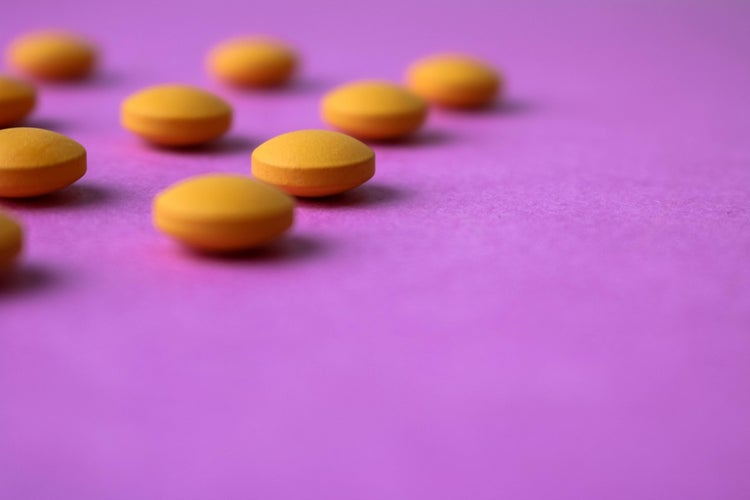NEWS FLASH: This Combo Curbs Depression, Blue Light and Aging, Walk to Better Sleep

Every week, we’re bringing you a roundup of the latest health and wellness news to hit the wire. This week, we look at the different types of over-the-counter meds that may help alleviate depression, what the blue light from our devices might be doing to our brains, and how just a little bit of walking can improve your sleep.
What’s in your medicine cabinet might help depression
A new study has found that common painkillers such as ibuprofen and aspirin, as well as statins and fish oils, may help fight depression, particularly if taken with antidepressants, according to a report in the Independent.
The review of 26 existing studies, published in the Journal of Neurology, Neurosurgery and Psychiatry, found that nonsteroidal anti-inflammatory drugs as well as omega-3 fatty acids found in fish oil, minocycline and statins were the most effective at curbing depression and that the effect was greater when combined with a prescription antidepressant.
Overall, when grouped with other types of anti-inflammatories, such as steroids, cytokine inhibitors, N-acetyl cysteine (which is used to break up phlegm and modafinil (a drug for sleep disorders), these medications as a group were 52 percent more effective than a placebo at reducing overall symptoms of depression and were 79 percent more effective in eliminating symptoms of depression.
This doesn’t mean people should pop ibuprofen daily along with their Prozac or get on a statin drug if they don’t need it, but it should spur more research, experts say, into how some anti-inflammatory medications or supplements could help people with depression or make conventional antidepressants more effective for those taking them.
Your screen time is aging you
Another reason to get off your phone: The blue light from your smartphone, computer and other devices could be shortening your longevity.
New research from Oregon State University suggests that the blue light produced by light-emitting diodes (LEDs) might damage cells in brains and retinas, according to a study on model organisms.
The study, published recently in Aging and Mechanisms of Disease on ScienceDaily, involved the common fruit fly, a widely used stand-in for humans in research because of the similarities in cellular and developmental mechanisms it shares with them and humans.
While more research is needed, preliminary studies exposing flies to 12 hours of blue light of the type in electronic devices had shorter lives, and those exposed had damaged retinal cells and brain neurons. Moreover, the flies’ locomotion was impaired, making it harder for them to climb the walls of their enclosure.
What was most interesting is that even some of the mutant flies in the experiment that did not have eyes developed brain damage and locomotion impairment, suggesting that they didn’t have to look at the light to be affected by it.
Natural light, researchers say, is critical for maintaining the body’s circadian rhythm, or the 24-hour cycle of physiological processes that include brain-wave activity, hormone production and cell regeneration, which influence feeding and sleeping patterns.
This, researchers say, is where the technology industry and medicine could work together to develop products with a “healthier” spectrum of light.
Walk your way to better sleep
New research covered by The New York Times confirms what many of us had already suspected: Those who move more during the day sleep better at night.
And achieving a higher quality of sleep didn’t require engaging in intense workouts each day. Rather, in this monthlong study of 59 middle-aged men and women around Boston, it was a matter of just squeezing in more movement by walking and doing other types of light activity such as housework. Researchers at Brandeis University combed through activity data from monitors examining how much they had moved and how well they had slept.
The connection between movement and sleep was consistent and strong. The more participants moved during the month, the better the quality of sleep they reported. Ditto for the number of minutes spent moving; the more time in motion, the more solidly they dozed. And that connection held up even on individual days. When more steps were taken than usual, better snoozing was reported.
One caveat: There was little impact on sleep duration, as most of these participants reported getting seven to eight hours before the study began.
The best news is that the level of steps needed to get an improvement in sleep was not difficult—about 3,000 per day or a mile and a half of walking, although adding more steps only increased the quality of sleep reported.
Photo credit: undefined undefined, Getty Images